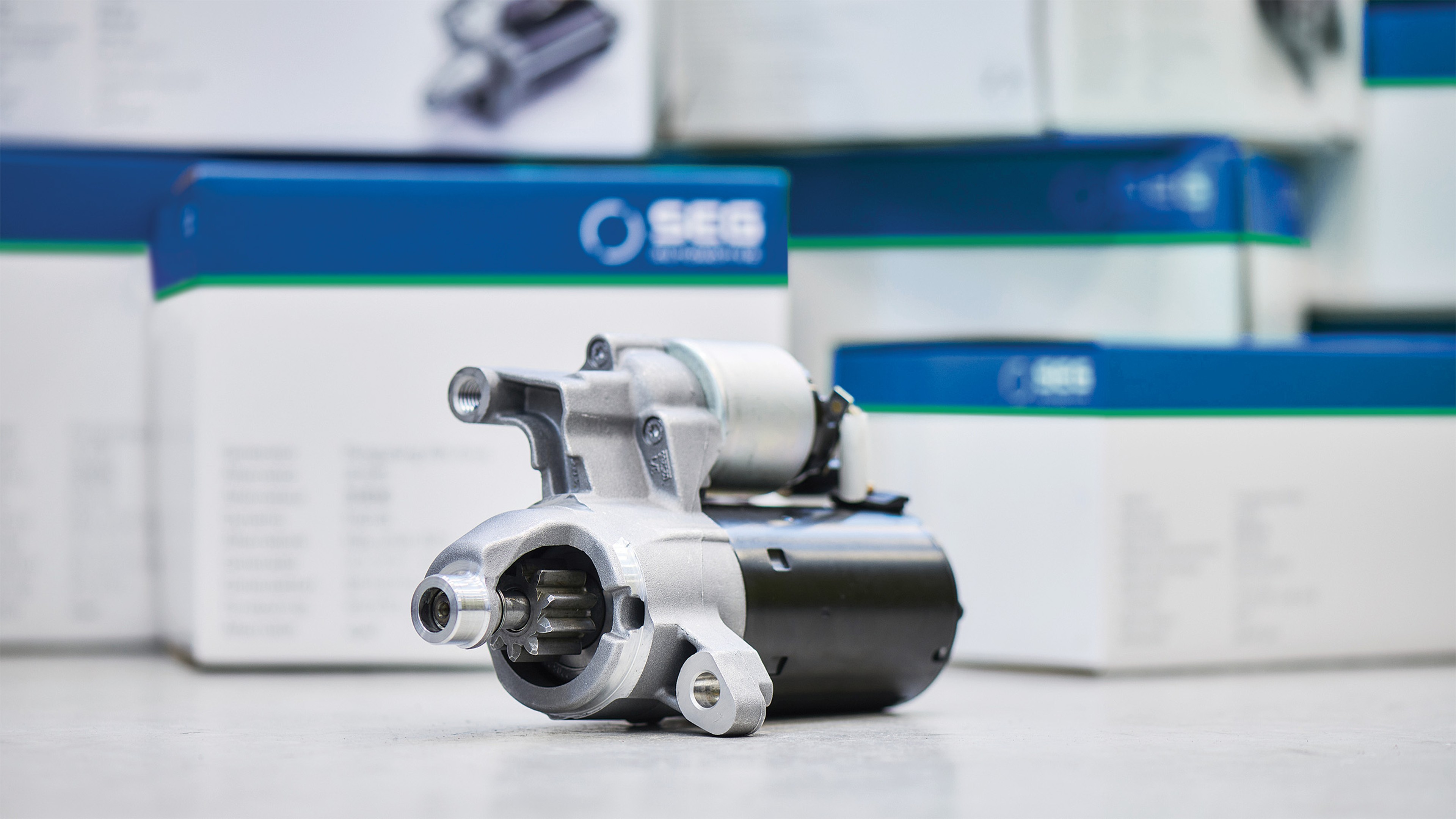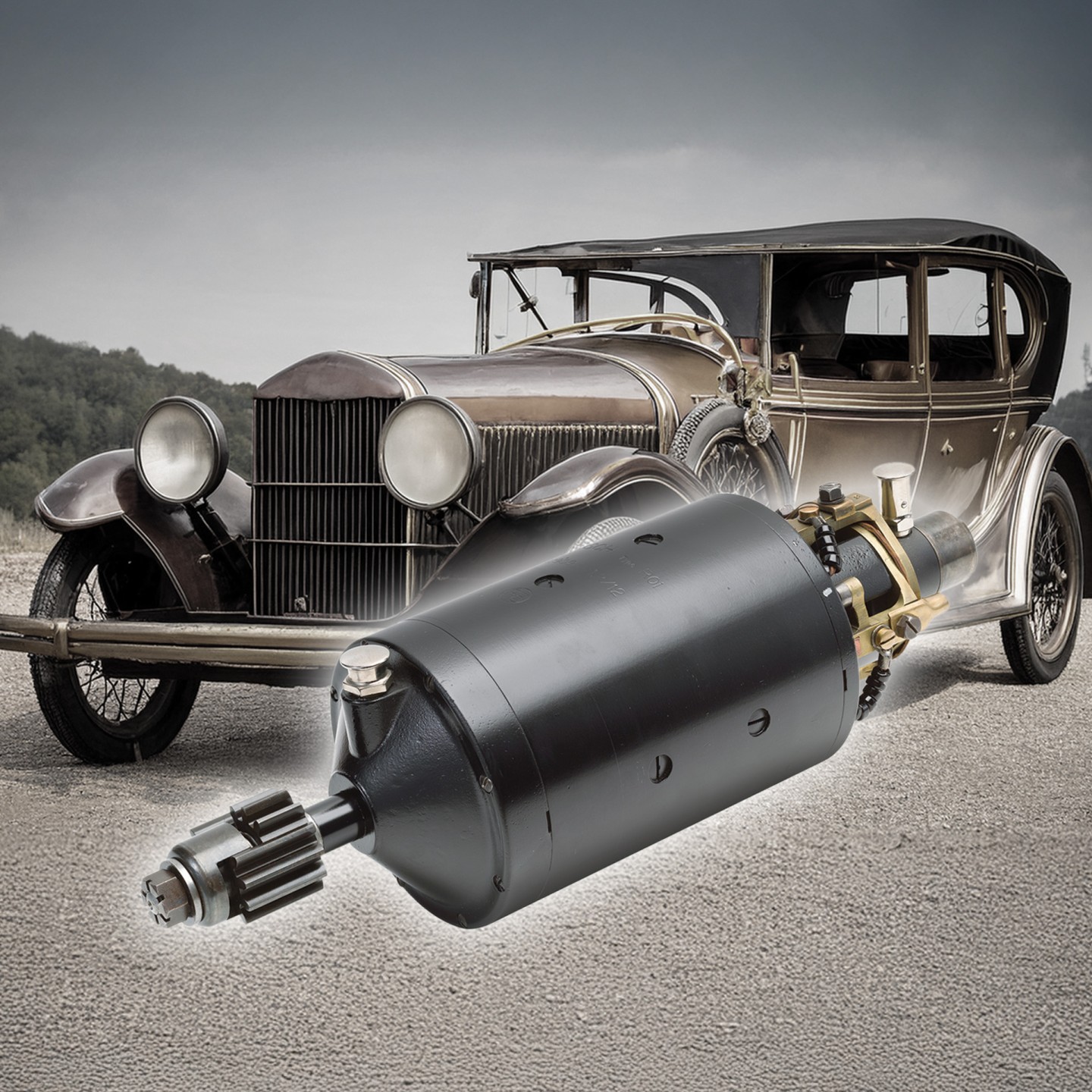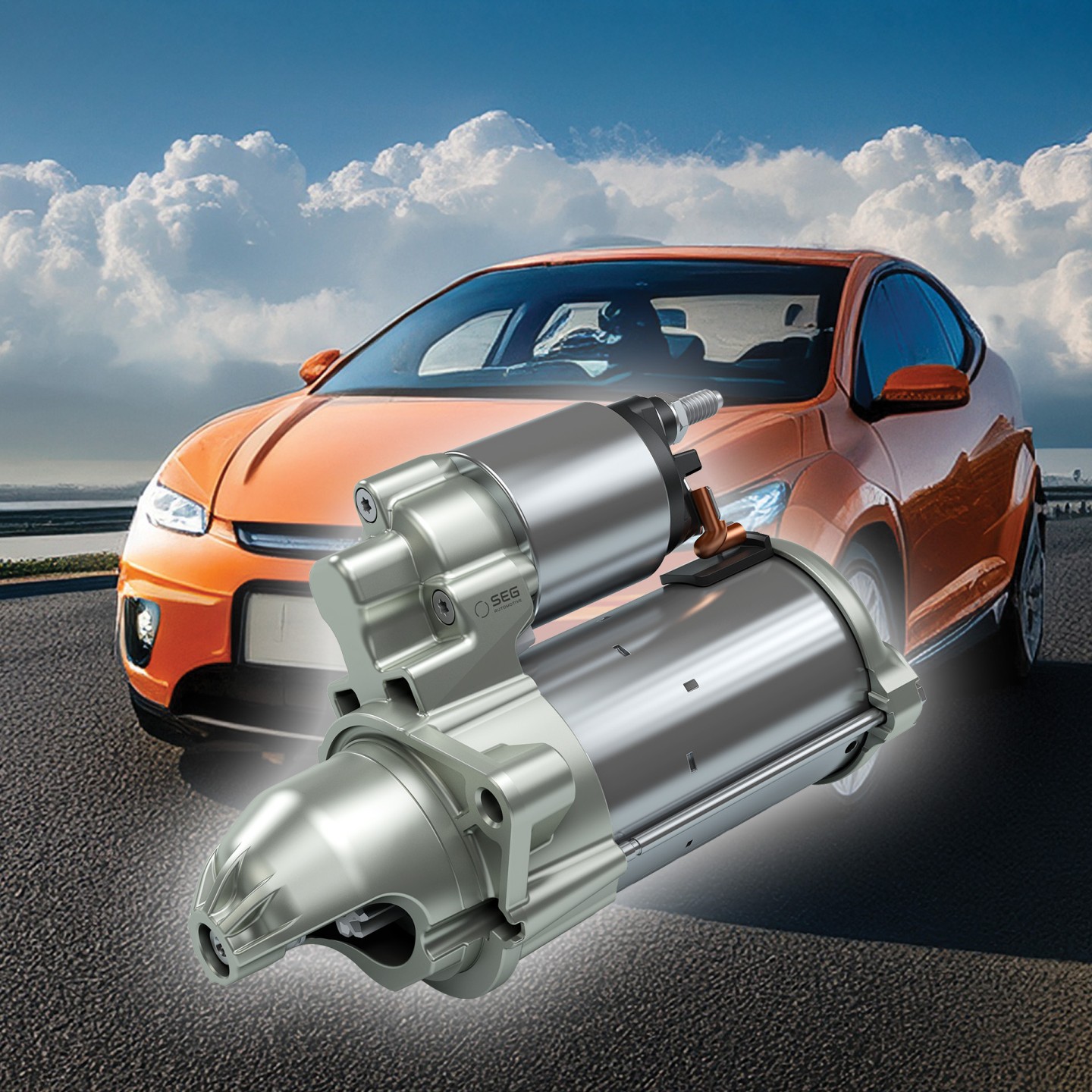SEG Automotive celebrates 111 years of starter motor development and production

- 111 years of innovation: SEG Automotive celebrates over a century of starter motor development and production since the electric starter motor went into series production in 1914.
- Technological development: From the first sliding-armature to modern start/stop, starter motor technology has continued to develop.
- Modern requirements: Today's starter motors are highly specialized and adapted to different vehicle types and installation situations.
- Aftermarket requirements: Custom-fit starter motors with exact vehicle assignments via databases such as TecDoc are important for workshops and repair shops.
- Sustainability through remanufacturing: Remanufactured starter motors are technically as good as new, resource-saving and cost-effective.
- Variety of spare parts: In addition to complete starter motors, individual components such as carbon brush holders or solenoid are also available – for cost-effective repairs.
From the past...
111 years ago, the electric starter motor meant a revolution in vehicle technology. Before its introduction, vehicles had to be laboriously started by hand crank – a procedure that often led to injuries. Accordingly, the electric starter motor not only meant more comfort, but also a significant increase in safety.
The [Opens in a new tab] first starter motor was a so-called sliding-armature starter motor: a system in which the armature, shaft and pinion moved together towards the engine flywheel to start the engine. This mechanism was activated via a bulky foot switch in the driver's cab. In the decades that followed, the starter mechanism was constantly refined. The introduction of coaxial-screws, solenoids and engagement levers greatly simplified the engagement mechanism – it was no longer necessary to move the entire inner workings of the starter. Freewheel bearings ensured that the starter motor was not over-revved after the engine was started, which significantly increased its service life.
In the 1980s, permanent magnets and planetary gears found their way into starter technology. As a result, size and weight could be significantly reduced – while maintaining or even increasing performance.

... into the present
With the beginning of the new millennium, the era of start/stop starter motors finally began. Thanks to improved materials and reinforced construction, it was now possible to start the engine not only at the beginning of a ride. Rather, the engine has since stopped at every stop, for example at traffic lights or in stop-and-go traffic, or even at constant speed on the highway (coasting). A step on the accelerator pedal then automatically restarts it. Since 2007, the technology has thus made an important contribution to fuel savings and CO₂ reduction in road traffic at SEG Automotive.
Today, suitable conventional and start/stop starter motors are available for all vehicles with combustion engines – from compact city vehicles to vans and heavy commercial vehicles to agricultural and construction machinery. This wide range of applications comes with an enormous variety of variants. Each starter motor is precisely tailored to the specific requirements of its operating environment to ensure maximum reliability and performance.
A central criterion, for example, is the installation position of the starter motor. While in a passenger car the current path from the battery in the engine compartment is often only a few centimeters, in buses or construction machinery it can be several meters long – which places special demands on the electrical design.
But even in the field of passenger cars, there are considerable differences. Depending on the installation location, special sealing or heating concepts must be developed to protect the starter motor from dust, moisture or extreme temperatures.
This high degree of adaptability is only possible through state-of-the-art development and manufacturing technologies in original equipment.

Starter motors for the automotive aftermarket
The enormous variety of variants of today's vehicles is also reflected in the [Opens in a new tab] aftermarket. In order for workshops to work reliably, spare parts must fit exactly – both technically and in their installation situation.
To ensure the correct allocation, comprehensive databases such as TecDoc are essential. Manufacturers of starters and other spare parts provide precise information here so that workshops can find the right starter motors quickly and reliably – and complaints due to incorrect applications are avoided.
For repairs in line with current value, remanufacturing is a good addition. At the supplier SEG Automotive, [Opens in a new tab] starter motors are remanufactured according to strict quality standards at the Miskolc plant (Hungary) using automated series processes. These are technically equivalent to a new product, but more resource-saving and cost-effective due to the reuse of materials.
In addition, starter motor spare parts such as brush holders, armatures or solenoids are also available in the aftermarket. This allows targeted repairs to be carried out where a new part is no longer worthwhile for economic reasons.
Whether remanufacturing or replacing individual components – both approaches extend the service life of the starter motor and thus make their contribution to the circular economy.
Good to know
- What is a starter motor?
The starter motor, is a small electric motor in the vehicle engine compartment and is required to start the combustion engine until it runs on its own.
- What does a starter motor do?
When the ignition key is turned or the start button is pressed, current flows from the car battery to the starter motor. The starter pinion is set in motion via a solenoid and engages on the engine flywheel. The pinion then begins to rotate and drives the engine flywheel. Since the flywheel is directly connected to the crankshaft, it also begins to rotate. The pistons in the cylinders are moved, the fuel-air mixture is compressed and ignited, the combustion process begins, and the engine continues to run independently. Finally, the starter pinion tracks out again and the starter motor moves to its original state.
- What is the difference between passenger car and commercial vehicle starter motors?
Starter motors in passenger cars are compact and lightweight, with typical outputs between 1.2 and 2 kW. In comparison, commercial vehicles such as trucks or buses require significantly more torque when starting due to their larger and more powerful engines. Accordingly, starter motors for commercial vehicles are more robustly designed and achieve outputs of 10 to 25 kW. While passenger cars are usually equipped with 12-volt starter motors, 24-volt systems are often used in commercial vehicles to efficiently provide the higher power and reduce the amperage. These requirements are also reflected in the weight: passenger car starter motors usually weigh between 2 and 4 kg, while commercial vehicles typically weigh between 7 and 16 kg. Despite these differences, both types of starter motors are similarly efficient in terms of their power-to-weight ratio – i.e. the power per kilogram.
- Conventional or start/stop starter motor?
A conventional starter motor is designed for significantly fewer starting processes than a start/stop starter motor. While conventional starter motors can handle around 60,000 engine starts over the life of a vehicle, start/stop starter motors must be much more robust and reliably perform between 150,000 and 330,000 starts. To withstand this higher load, they are mechanically reinforced, more responsive and optimized for frequent use in city traffic.

Press contact
SEG Automotive
Christoph Hoelzl
Press Officer / Pressesprecher
Tel.
[Opens in a new tab]
+49 711 4009 – 8172
[Opens in a new tab]
press@seg-automotive.com